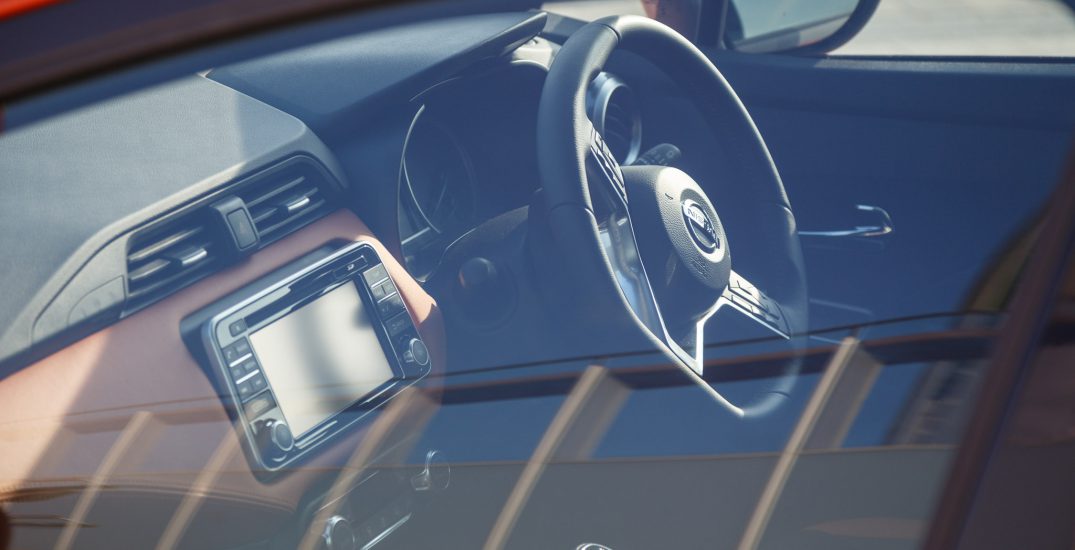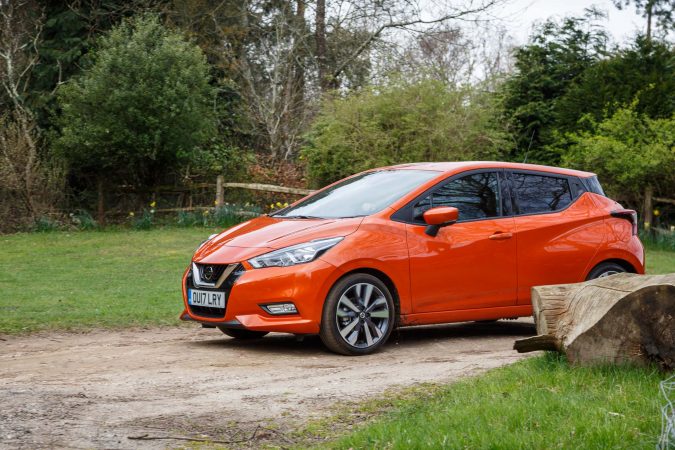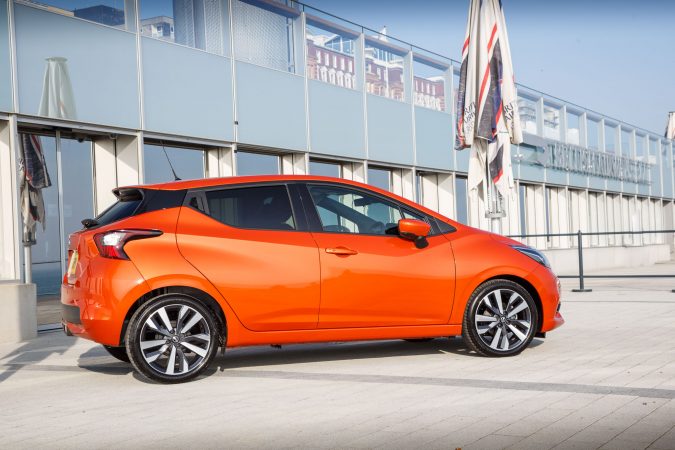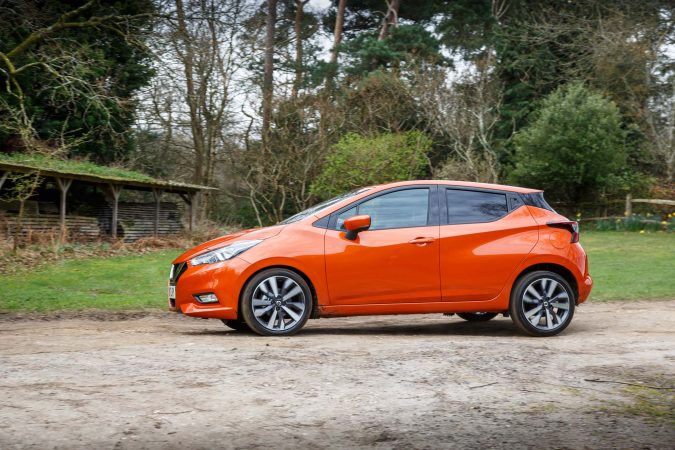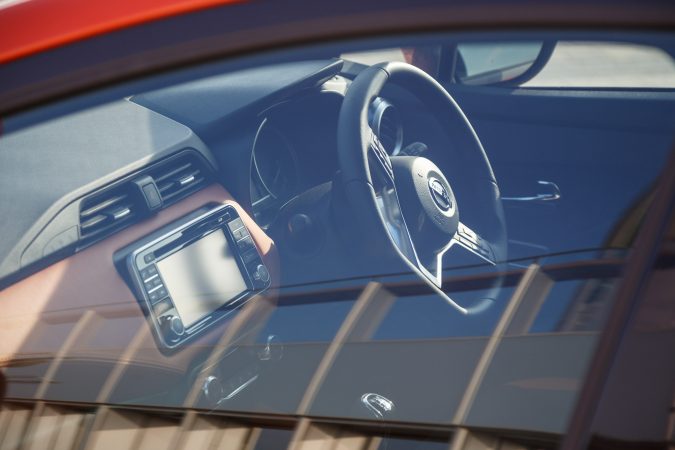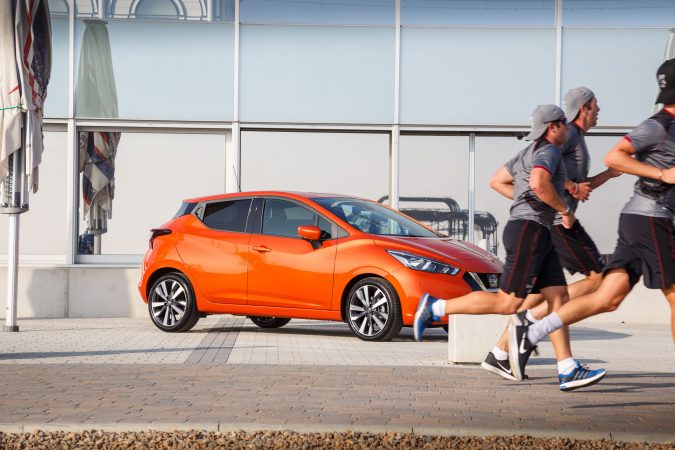Driven: Nissan Micra Tekna 2017 Review
Here is our first look at the all new Nissan Micra Tekna for 2017.
What Is The 2017 Nissan Micra Tekna All About?
The Nissan Micra has been around since 1983 and over the years has come in many shapes and sizes. Now Nissan have put huge efforts into the latest model to make the car the very best it can be and first impressions are very positive.
The new car only really shares the name with the previous car everything else is in a completely different world. The all-new car has five trim levels, which are Visia, Visia+, Acenta, N-Connecta and the top of the range Tekna. The standard kit is great with all cars getting Bluetooth, as well as auto emergency braking and a lane departure warning system. Visia+ brings air con and stop-start feature, Acenta brings alloy wheels, smartphone connectivity and a very nice 7 inch touchscreen infotainment system. N-Connecta brings fog lamps, heated mirrors and a premium infotainment system, while the Tekna benefits from 17 inch alloys, keyless go, a rear-view and birds eye camera and a Bose audio system that has been designed specifically for the new Micra. Engines available are a 1.5 litre diesel and 0.9 litre petrol at launch, but later this year will bring a 1.0 litre petrol also.
The car we are testing is the top of the range Tekna model using the very-efficient 1.5-litre diesel engine and is painted in Energy Orange with the Energy Orange trim inside. The styling of the car is very modern day with the highlight being dynamic feature lines running strongly down either side of the car giving it a sporty profile. Looking closely at the front you will notice the chrome V-motion line underneath the grille and if you look even closer you will spot a 3D printed Nissan badge, this is done to allow the radar sensors to be placed in prime position.
The Micra is powered by a 1.5 litre turbo-diesel engine, which creates 90 PS and 220 Nm of torque. This power goes through a 5-speed manual gearbox getting the car from 0-60 mph in 11.9 seconds and is capable of doing a top speed of 111 mph. The most outstanding statistic about this car is that Nissan say it will do a combined economy figure of 80 mpg, whilst only creating 92 g/km of CO2.
How Does It Drive?
The first driving impression that you get from the new 2017 Micra was refreshing; the car is light and easy to manoeuvre and you can feel the tyres and suspension soaking up all the rockiness of the roads. The 1.5 litre diesel engine with 90 PS is quite a good fit for the car. The balance of power and performance is spot on, with easily achieving over 50 mpg for most of our testing in real world scenarios. Having that diesel grunt, means getting the car up to speed is very easy and it really doesn’t matter what gear you are in.
You do get enough feedback to the driver through the steering wheel and is weighted very nicely, meaning that city driving and parking is easy.
The new Micra has some driving aids that actively work to improve the driving experience behind the wheel. These two systems are Active Ride Control and Active Trace Control. These clever systems make thousands of calculations to adjust the engine and brake inputs to improve cornering and stability. You can’t feel these systems interrupting, but you can feel the benefits on the road for sure.
The new Micra also has driving aids that help improve the driving experience such as high beam assist that will automatically enable and disable high beam lights when required, lane departure warning helping to alert the driver if you wander out of your lane and even traffic sign recognition that will read physical signs at the side of the road and display them on the 5 inch digital driver instrument panel, meaning you will always know the correct speed limit.
What Is It Like Inside?
The cabin area feels very spacious and is a pleasant space to be in. The back of the car however does feel a bit more limited certainly for tall adults as do most of the other cars in the small hatchback segment also, so this is no surprise.
The overall interior design is bold and stylish, you can see the test car here that has the Energy Orange trim, this certainly brightens up the interior and will certainly be a conversation starter with your passengers. There are also quite a lot of different storage areas in the car which is a big benefit. The glove box and door pockets can easily store 2 litre bottles of water as an example. Finally, the boot space is great, at 300 litres with the seats up and is a practical size and shape for daily use.
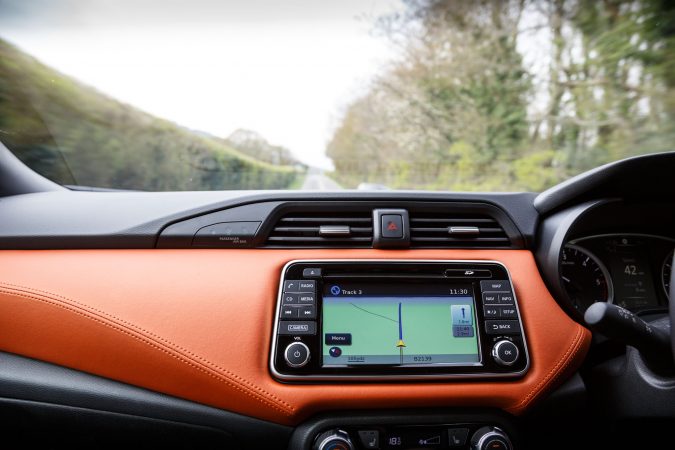
The infotainment system in the Micra Tekna is relatively easy to use and has all the functionality that you would ask for from this type of car. But Nissan have taken things a step further with a very impressive premium Bose setup that is focused on the driver and front passenger using speakers in the headrests. I have to say I was hugely impressed with both the sound quality and the volume that the system creates. That is a perfect bonus for a small hatchback and I can’t say I have heard another system that rivals the one in the new Micra in such an affordable car.
The Experience
The new Nissan Micra is such a refreshing overall experience to the segment, there are lots of exciting cool colours and a stack load of personalisation options. Once you’re behind the wheel the driving experience is very active and encouraging not like any Micra I have experienced in the past.
Verdict
The Nissan Micra is a real competitor to other popular cars in this area at the moment such as the Ford Fiesta. But I’m starting to feel that Nissan Micra has the upper hand with their new car. We have said how well it drives and how cool it looks but, those aside, the car is highly efficient and very well-equipped also.
Take to the wheel of your own high performance Nissan over at Drifted’s drifting games page.
Video Highlights
Specification
Nissan Micra Tekna 2017
- Price: £20,290
- Engine: 1.5-Litre dCi
- Power: 90 PS
- Torque: 220 Nm
- Transmission: 5-Speed Manual
- 0-62mph: 11.9 Seconds
- Top speed: 111 mph
- Weight: 1,146 kg
- Economy combined: 80 mpg
- CO2: 92 g/km
Author: Paul Hadley









